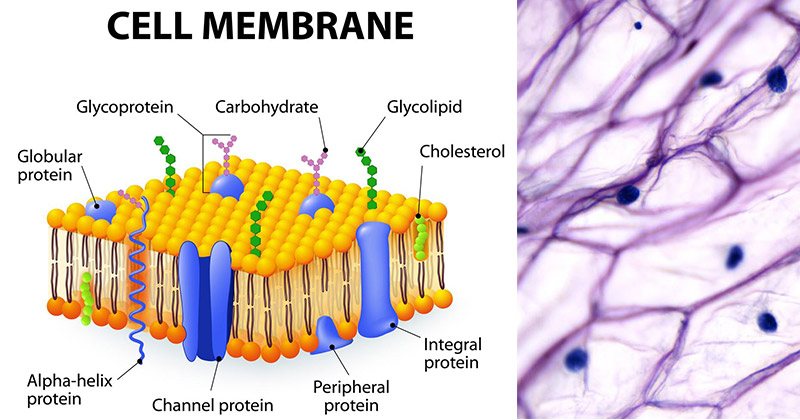The water-soluble portion of a phospholipid is the polar head which generally consists of a glycerol molecule linked to a phosphate group. On the basis of hydro-phobicity analysis there are two closely.

Voltage Gated Potassium Channel An Overview Sciencedirect Topics
The potassium ion channel is a tetramer.

. The structure of the potassium channel. We review recent progress in K channel structural studies. They provide an opportunity to integrate structural and computational studies in order to arrive at an atomic resolution description of mechanism.
Each subunit of the tetrameric voltagegated potassium Kv channel has an Nterminal cluster ball of 20 amino acids tethered to the Nterminal tail of an α subunit or in some cases eg. Start studying Potassium Ion channel. The principal constituents of the filter.
A ball-and-chain model best describes how N-type inactivation occurs. These channels are typically composed of two parts. The structure of this ion channel is related to that of the voltage-dependent K channel with the addition of a Ca 2-sensitive region on the cytosolic side.
This material can be found in a cell membrane. The potassium channel from Streptomyces lividans is an integral membrane protein with sequence similarity to all known K channels particularly in the pore region. Terms in this set 9 What is the structure of the Potassium Ion Channel-Homotetrameric-Folding of the helices forms a filter.
The structure shown here from PDB entry 1bl8 shows the filter portion of a bacterial potassium channel. There are over 80 mammalian genes that encode potassium channel subunits. Potassium channels in human cells most likely work the same way the researchers say.
These channels are typically composed of two parts. Potassium channels ubiquitously exist in nearly all kingdoms of life and perform diverse but important functions. Kuo A Gulbis JM Cohen SL Chait BT MacKinnon R.
D the voltage-dependent potassium channels cannot be opened. N-type inactivation must be relieved before currents can flow through an open channel again. Every potassium channels and its subunits contain a separate pore-loop structure which is present at the top and helps in giving selective permeability to the potassium channels.
Molecular basis of K conduction and selectivity. 3840 Several families of this channel are expressed in the brain each with varying sensitivity to Ca 2 and K conductance and therefore divided into two groups small conductance SK Ca and large conductance BK Ca. Sodium channels closed potassium channels closed Sodium channels open potassium channels closed Sodium channels open Potassium channels opening slowly Sodium channels closed potassium channels open Sodium channels inactivated potassium channels open 1 pts 1 pts Question 46 Which of the following describes the configuration of sodium and.
In the resting membrane potential the voltage inside the cell is approximately _____. The structure of a bacterial K channel sequence comparisons with other channels and electrophysiological. The crystal structure of KcsA has shown that the filter is about 12-Å long and 25 Å in diameter.
Channel 5 is similar to that of other K1 channels including vertebrate and inverte-brate voltage-dependent K1 channels ver-tebrate inward rectifier and Ca21-activated K1 channels K1 channels from plants and bacteria and cyclic nucleotide-gated cation channels Fig. All potassium channel subunits have a distinctive pore-loop structure that lines the top of the pore and is responsible for potassium selective permeability. Potassium channels have been studied intensively in terms of the relationship between molecular structure and physiological function.
Learn vocabulary terms and more with flashcards games and other study tools. The structure of a potassium channel. If a red blood cell is placed in a salt solution and bursts what is the tonicity of the solution relative to the interior of the cell.
They are all or none and will go to completion. In an accompanying paper MacKinnons team notes that scorpion toxin--a potent potassium channel inhibitor--has the same effect on pores in S. Kv1 family by N terminus of β subunit tetramer that enters the inner vestibule of the channel postopening and physically occludes the pore thus inactivating the channel.
X-ray analysis with data to 32 angstroms reveals that four identical subunits create an inverted teepee or cone cradling the selectivity filter of the pore in its outer end. These channels in the bacteria are well-studied among all the ion channels. Lividans and those of the fruit fly Drosophila whose nuclei are organized similar to those of human cells.
Above 80 genes are present in mammals that give rise to potassium channel subunits. Potassium channels tetrameric integral membrane proteins that form aqueous pores through which K can flow are found in virtually all organisms. Which statement best describes an action potential.
This is an example of what type of structure. It has 4 domains with extensive sequence homology. The genomes of humans Drosophila and Caenorhabditis elegans contain 30-100 K channel genes each.
If a cell ONLY had potassium channels on the postsynaptic membrane then the only response of the postsynaptic neuron would be _____. Since the first atomic structure of a prokaryotic potassium channel KcsA a channel from Streptomyces lividans was determined tremendous progress has been made in understanding the mechanism of potassium channels and channels conducting other ions. E there are too many sodium ions inside the cell to permit another action potential.
The potassium channel from Streptomyces lividans is an integral membrane protein with sequence similarity to all known K channels particularly in the pore region. X-ray analysis with data to 32 angstroms reveals that four identical subunits create an inverted teepee or cone cradling the selectivity filter of the pore in its outer end. The filter which selects and allows potassium but not sodium to pass and the gate which opens and closes the channel based on environmental signals.
Here a three-dimensional 3-D structure and function of a potent acidic blocker of the human voltage-gated potassium ion channel Kv13 previously identified in.

Ch 11 The Nervous System Flashcards Quizlet

Plasma Membrane Hchs Quiz Quizizz



0 Comments